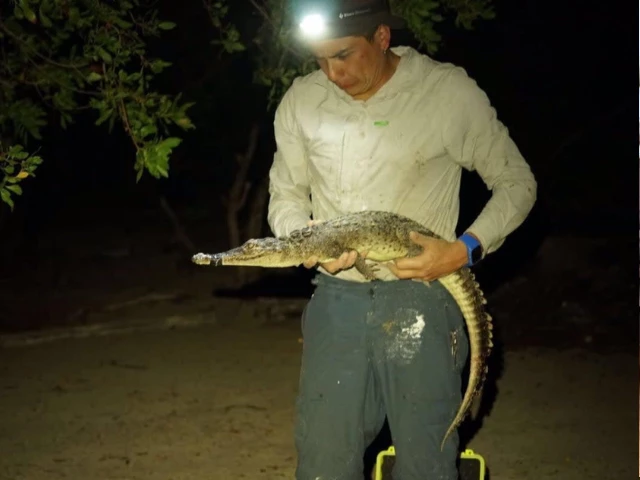Two new crocodile species discovered by scientists
Researchers from Canada’s McGill University found distinct genetic and anatomical traits, confirming new species.

Scientists have identified two previously unknown crocodile species off Mexico’s Yucatán Peninsula, both of which may already be at risk of extinction due to small population sizes and habitat pressures.
The new species were found on Cozumel Island and Banco Chinchorro, a coral atoll, and are genetically distinct from the American crocodile (Crocodylus acutus), according to a study published in the journal Molecular Phylogenetics and Evolution.
The discovery brings the total number of known New World crocodile species to six.
Until now, scientists recognised only the American, Morelet’s, Cuban, and Orinoco crocodiles in the region.
Researchers from Canada’s McGill University, along with partners in Mexico and Panama, conducted genetic and anatomical analyses that revealed enough variation to classify the Cozumel and Banco Chinchorro populations as separate species.
“These results were totally unexpected,” said lead author José Avila-Cervantes. “We assumed Crocodylus acutus was a single species ranging from Baja California to Venezuela and across the Caribbean.”
The research involved collecting DNA and skull measurements from crocodiles in both locations. Notable differences included skull shape, with Banco Chinchorro crocodiles displaying longer and broader snouts.
The study estimates that each new species has fewer than 1,000 breeding individuals, and effective population sizes may be as low as 500. While current numbers appear stable, scientists warned that limited habitat and increasing tourism-related development could pose serious risks.
“Biodiversity is disappearing faster than we can discover what we’re losing,” said senior author Hans Larsson of McGill. “Most crocodile species are already endangered. Protecting these habitats is critical.”
Cozumel, a major cruise destination, received over 1.5 million visitors in the first three months of 2025 alone. Banco Chinchorro, part of the Mesoamerican Barrier Reef System, is also under ecological strain.
The researchers urged governments and conservation groups to implement stricter land-use policies and establish habitat protections to preserve the newly identified species.
Although the reptiles are yet to be formally named, researchers hinted that references to their geographic isolation—such as Crocodylus cozumelus or chinchorri—may be used in their taxonomic classification.
The study highlights how natural barriers such as ocean currents in the Yucatán region have helped shape biodiversity by isolating species and allowing unique evolution to occur.
“These crocodiles are evolutionary survivors,” said Larsson. “Now that we know they exist, we must ensure they don’t disappear before they are even named.”
























COMMENTS
Comments are moderated and generally will be posted if they are on-topic and not abusive.
For more information, please see our Comments FAQ